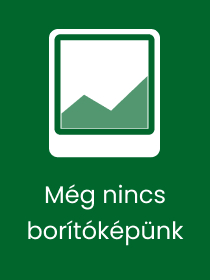
The Oxford Handbook of Neolithic Europe
Sorozatcím: Oxford Handbooks;
-
10% KEDVEZMÉNY?
- A kedvezmény csak az 'Értesítés a kedvenc témákról' hírlevelünk címzettjeinek rendeléseire érvényes.
- Kiadói listaár GBP 49.49
-
23 643 Ft (22 517 Ft + 5% áfa)
Az ár azért becsült, mert a rendelés pillanatában nem lehet pontosan tudni, hogy a beérkezéskor milyen lesz a forint árfolyama az adott termék eredeti devizájához képest. Ha a forint romlana, kissé többet, ha javulna, kissé kevesebbet kell majd fizetnie.
- Kedvezmény(ek) 10% (cc. 2 364 Ft off)
- Kedvezményes ár 21 279 Ft (20 265 Ft + 5% áfa)
Iratkozzon fel most és részesüljön kedvezőbb árainkból!
Feliratkozom
23 643 Ft

Beszerezhetőség
Becsült beszerzési idő: A Prosperónál jelenleg nincsen raktáron, de a kiadónál igen. Beszerzés kb. 3-5 hét..
A Prosperónál jelenleg nincsen raktáron.
Why don't you give exact delivery time?
A beszerzés időigényét az eddigi tapasztalatokra alapozva adjuk meg. Azért becsült, mert a terméket külföldről hozzuk be, így a kiadó kiszolgálásának pillanatnyi gyorsaságától is függ. A megadottnál gyorsabb és lassabb szállítás is elképzelhető, de mindent megteszünk, hogy Ön a lehető leghamarabb jusson hozzá a termékhez.
A termék adatai:
- Kiadó OUP Oxford
- Megjelenés dátuma 2019. január 10.
- ISBN 9780198832492
- Kötéstípus Puhakötés
- Terjedelem1202 oldal
- Méret 246x171 mm
- Súly 2268 g
- Nyelv angol
- Illusztrációk 197 illustrations 100
Kategóriák
Rövid leírás:
The Oxford Handbook of Neolithic Europe provides the first comprehensive, geographically extensive, thematic overview of the European Neolithic - from Iberia to Russia and from Norway to Malta - offering both a general introduction and a clear exploration of key issues and current debates surrounding evidence and interpretation.
TöbbHosszú leírás:
The Neolithic --a period in which the first sedentary agrarian communities were established across much of Europe--has been a key topic of archaeological research for over a century. However, the variety of evidence across Europe, the range of languages in which research is carried out, and the way research traditions in different countries have developed makes it very difficult for both students and specialists to gain an overview of continent-wide trends.
The Oxford Handbook of Neolithic Europe provides the first comprehensive, geographically extensive, thematic overview of the European Neolithic --from Iberia to Russia and from Norway to Malta --offering both a general introduction and a clear exploration of key issues and current debates surrounding evidence and interpretation. Chapters written by leading experts in the field examine topics such as the movement of plants, animals, ideas, and people (including recent trends in the application of genetics and isotope analyses); cultural change (from the first appearance of farming to the first metal artefacts); domestic architecture; subsistence; material culture; monuments; and burial and other treatments of the dead. In doing so, the volume also considers the history of research and sets out agendas and themes for future work in the field.
The Oxford Handbook of Neolithic Europe represents an important contribution to world literature.
Tartalomjegyzék:
Part I: Introduction
Defining the 'Neolithic in Europe': Diverse and Contemporaneous Communities, c. 6500-2500 BC
Part II: Mobility, Change, and Interaction at the Large Scale
Environments and Landscape Change
Movement of Plants, Animals, Ideas, and People
South-East Europe
The Neolithization of Mediterranean Europe: Mobility and Interactions from the Near East to the Iberian Peninsula
Central and Eastern Europe
Moving Animals and Plants in the Early Neolithic of North-Western Europe
Language, Genes, and Cultural Interaction
Sequences of Cultural Interaction and Cultural Change
South-East Europe
The Neolithic in Mediterranean Europe
Central and Eastern Europe
Northern and Western Europe
Part III: Neolithic Worlds and Neolithic Lifeways
Houses, Habitation, and Community
Tells and Settlements in South-East Europe
Domestic Space in the Mediterranean
Longhouse Lifestyles in the Central European Neolithic
Lakeside Dwellings of the Circum-Alpine Region
Households and Communities in Neolithic France
Houses, Halls, and Occuptation in Britain and Ireland
Places of Settlement in Southern Scandanavia
Subsistence and Social Routine
Stable Isotopes and Neolithic Subsistence: Pattern and Variation
Subsistence Practices and Social Routine in Neolithic Southern Europe
Subsistence Practices in Central and Eastern Europe
Subsistence Practices in Western and Northern Europe
The Neolithic Year
Religious Routine and Pilgrimage in the British Isles
Materiality and Social Relations
Invention and European Knapping Traditions
Shared Labour and Large Scale Action: European Flint Mining
Stone and Flint Axes in Neolithic Europe
Pottery of South-East Europe
Linearbandkeramik Pottery and Society
Ceramics and Society in Northern Europe
Bell Beaker Pottery and Society
A Miniature World: Models and Figurines in South-East Europe
Spondylus and Shell Ornaments
Amber
The First Metalwork and Expressions of Social Power
Early Metallurgy in Iberia and the Western Mediterranean
Early Metallurgy in Western and Northern Europe
Deposition in Pits
Animals and Social Relations
Monuments, Rock Art, and Cosmology
Central European Enclosures
Italian Enclosures
Causewayed Enclosures in Northern and Western Europe
Chambered Tombs and Passage Graves of Northern and Western Europe
Rock Carvings in Iberia
Rock Carvings in South Central Europe
Rock Carvings in Northern Europe
Underground Religion in the Central Mediterranean Neolithic
A Place in the Cosmos: Monuments and Celestial Bodies
Death, Bodies, and Persons
Mortuary Practices, Bodies, and Persons in the Neolithic and Early-Middle Copper Ages of South-East Europe
Burial and Human Body Representations in the Central Mediterranean Neolithic
Mortuary Practices, Bodies, and Persons in Central Europe
Mortuary Practices, Bodies, and Persons in North-East Europe
Mortuary Practices and Bodily Representations in North-West Europe
Part IV: Conclusion: Debates in Neolithic Archaeology
Unexpected Histories? South-East and Central Europe
What Do We Mean By 'Neolithic Societies'?
The Decline of the Neolithic and the Rise of the Bronze Age Society


Introductions...a Story about God
5 258 Ft
4 838 Ft








